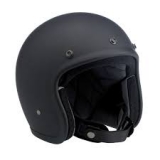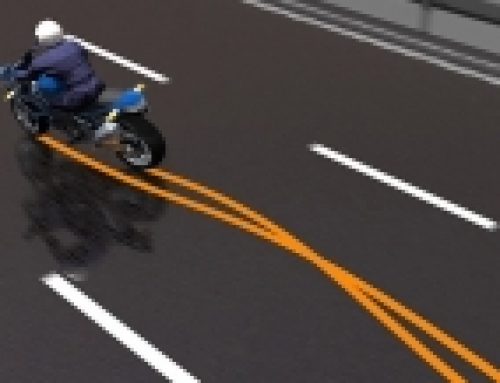One Simple Safety Gear That Can Save Your Life
By Michael Motorcycle 
This article will broach a subject which sometimes can be a contentious one in the motorcycle community. Included in this article will be conclusions from national studies and data used for major claims from the National Highway Traffic Safety Administration which has some alarming facts they support from these studies. All leading to the merits, benefits and safety results from wearing one piece of motorcycle gear specifically designed for your safety while riding. Riders believe in the freedom to choose this gear and I support that right. But there is overwhelming evidence that indicates you are safer riding your motorcycle when wearing this gear.
What would you say if I told you that this one piece of safety gear could reduce your risk of dying in a motorcycle accident by 29 percent? Riders who don’t wear this gear are 40% more likely to sustain a fatal head injury than those that do. Food for thought when you consider that per mile driven, a motorcyclist is 16 times more likely than an automobile driver to die in an accident.
Riders who didn’t wear this gear are 40% more likely to die of head injuries than those without it and head injuries is a leading cause of death in motorcycle crashes. If you are in an accident, wearing this item is 67% more effective in preventing traumatic brain injury.
Data confirmed through numerous studies conducted in Australia, Canada, Great Britain and Japan have shown the effectiveness of this gear in reducing or preventing the severity of motorcycle head injuries. That’s why all of these countries have laws requiring this item’s use. 
Of course I am referring to wearing helmets when riding our motorcycles. But not just any helmet will do. You should wear the right helmet for your type of riding to be as safe as possible.
When choosing a helmet you want the highest quality materials and the best fit for your type of ride. Design, materials and ventilation are other good factors for your consideration. The most important thing is to always use a DOT or SNELL rated helmet. A “DOT” helmets meets the minimum levels of helmet performance per the Department of Transportation standard known as Federal Motor Vehicle Standard 218 (FMVSS 218). “SNELL” is a Memorial Foundation that is a private not-for-profit organization that sets voluntary standards for motorcycle, auto racing and bicycle helmets. SNELL standards are considered tougher than DOT but always use a helmet rated to either standard type.
There are 5 types of helmets. Here is a summary of helmet types in descending order of safety with the safest first. And it’s only okay to wear a “novelty” helmet unless you are performing a “birthday dance” for your loved one. Other than that, don’t even think about wearing one of those.
- Full Face Helmets provide the most comprehensive in overall coverage which includes covering the head, face and the jaw. This type is the quietest and is well-sealed against the weather elements and ventilated for sufficient air-flow to keep you head cool.
- Three Quarter Helmets (also known as open face) cover the head but not the face. Visibility is better with this type because of the larger opening. Your face is covered with a visor but eye protection is recommended when riding with an open visor. Riding with the visor open can also provide a tasting snack and a “buggy” smile.
- Modular Helmets are a 2 piece system that combines the features of the Full Face and Three Quarter types. Your jaw is protected and the front portion can be raised to open up the front exposing your face. Still good for a “buggy” snack if you choose to ride with it open.
- Half Helmets are sometimes known as “Skull Caps” or “Brain Buckets”. They only cover the top of your head to the top of your ears. They provide the least amount of coverage leaving the lower part of the head and neck exposed to injury. These are usually perfunctory at best and provide the least amount of safety
- Off Road. These helmets are very recognizable by their longer sun visor and chin sections. They do not have face shields to eliminate the chance of fogging up. Instead, riders wear goggles. And they have vents too.
Is your head harder than concrete? Is it harder than asphalt? How about if you are flying off your bike? Which gives first? If someone was going to hit your head with a baseball bat would you rather have a helmet on or not? To me, the answer is obvious and is the same for falling off your bike and hitting your head on the ground.
We live in a great country that gives us all the freedom, liberty and right to make our own choices in what we do and how we do it as long as this does not infringe on the rights of others. I support the freedom to choose whether to wear a helmet or not. But the evidence is clear that wearing a helmet can make you safer while riding your motorcycle.
Use common sense, be safer and wear a helmet.
Michael Motorcycle





